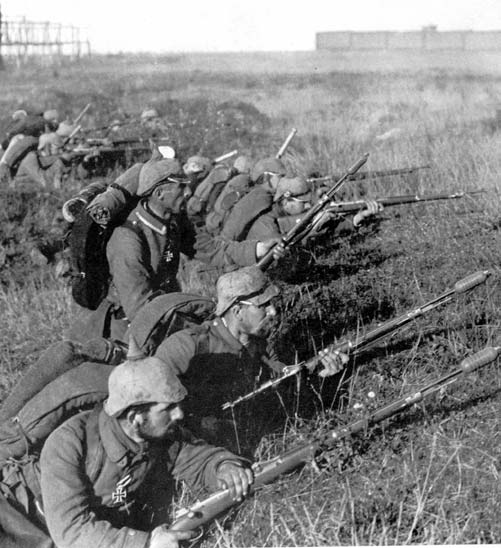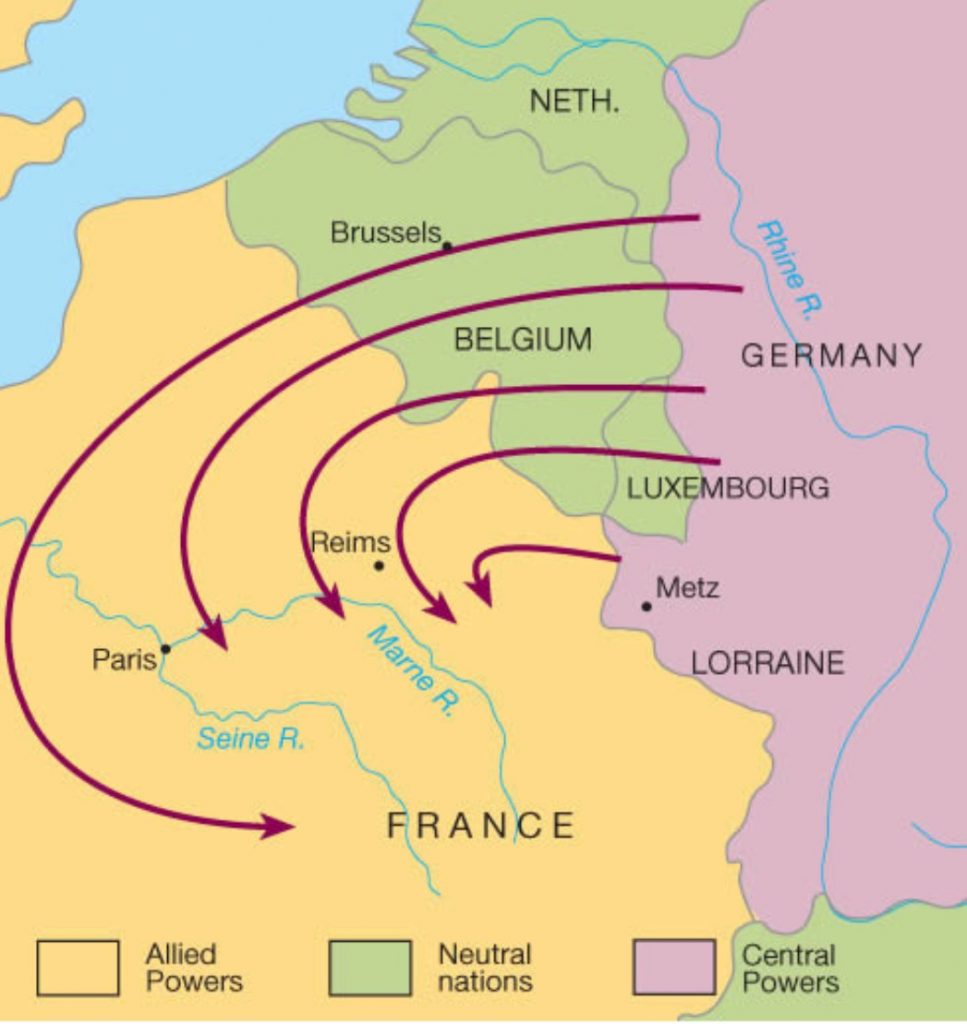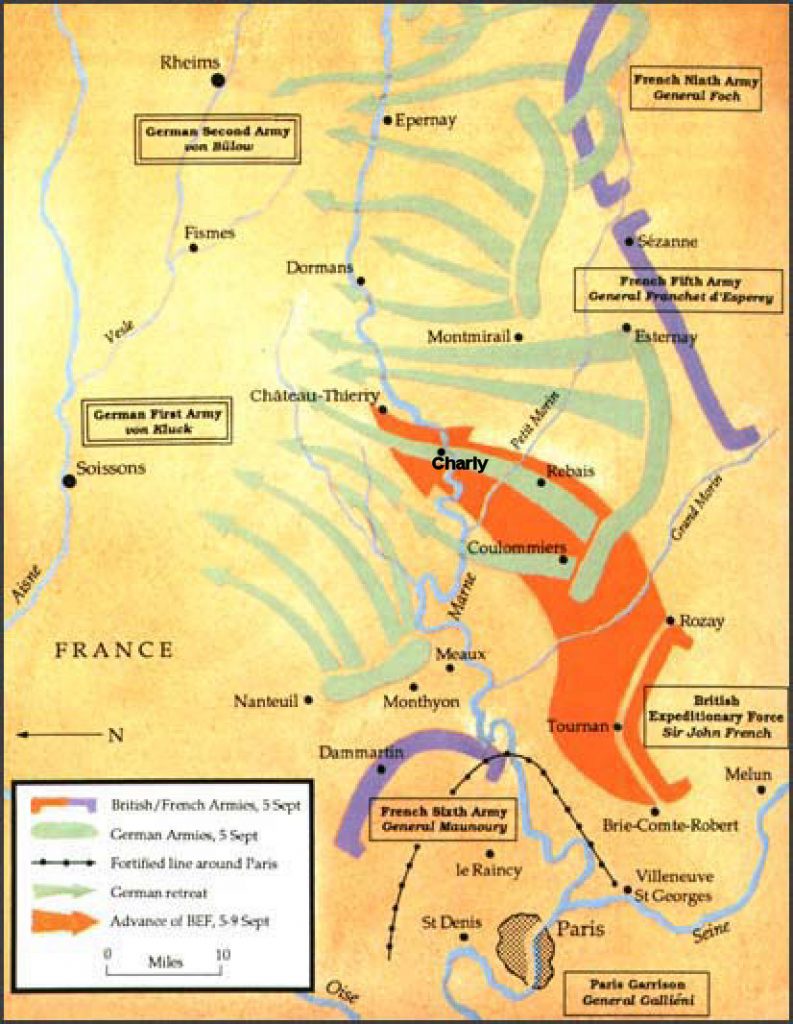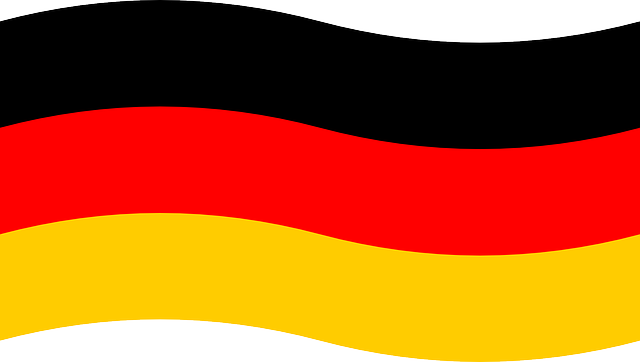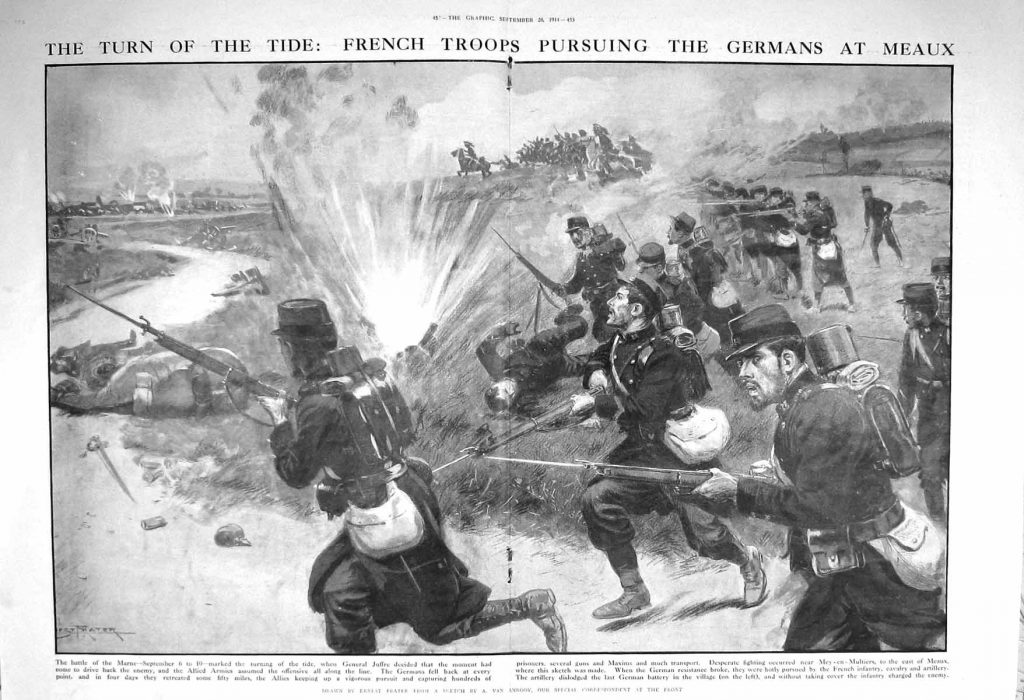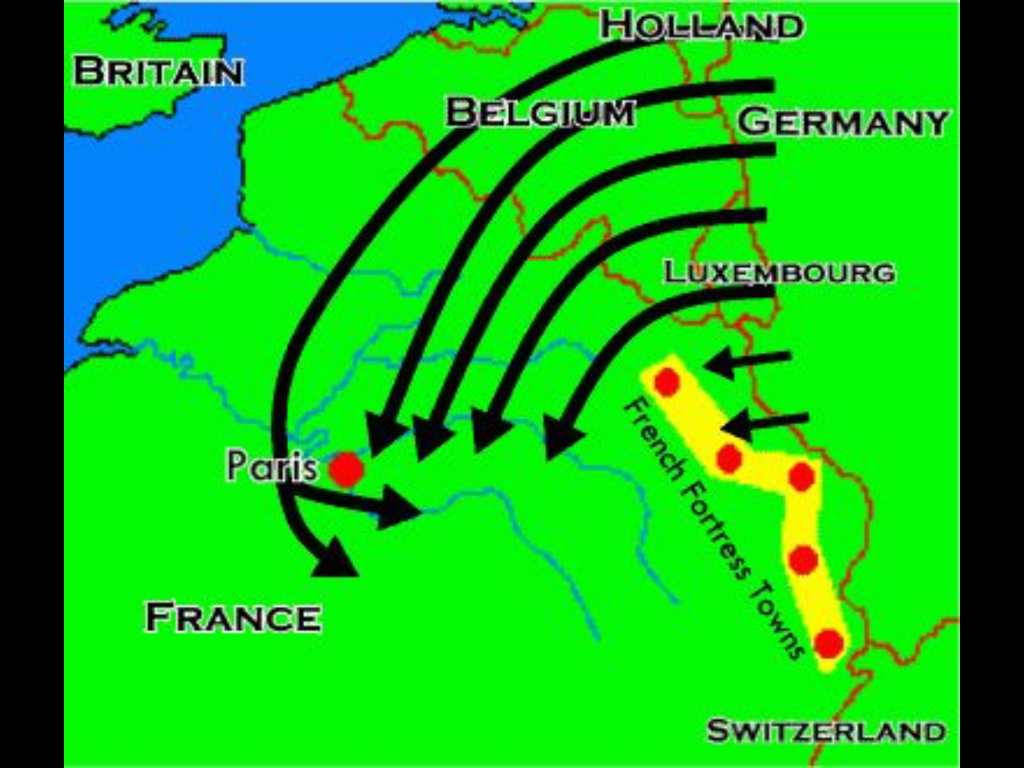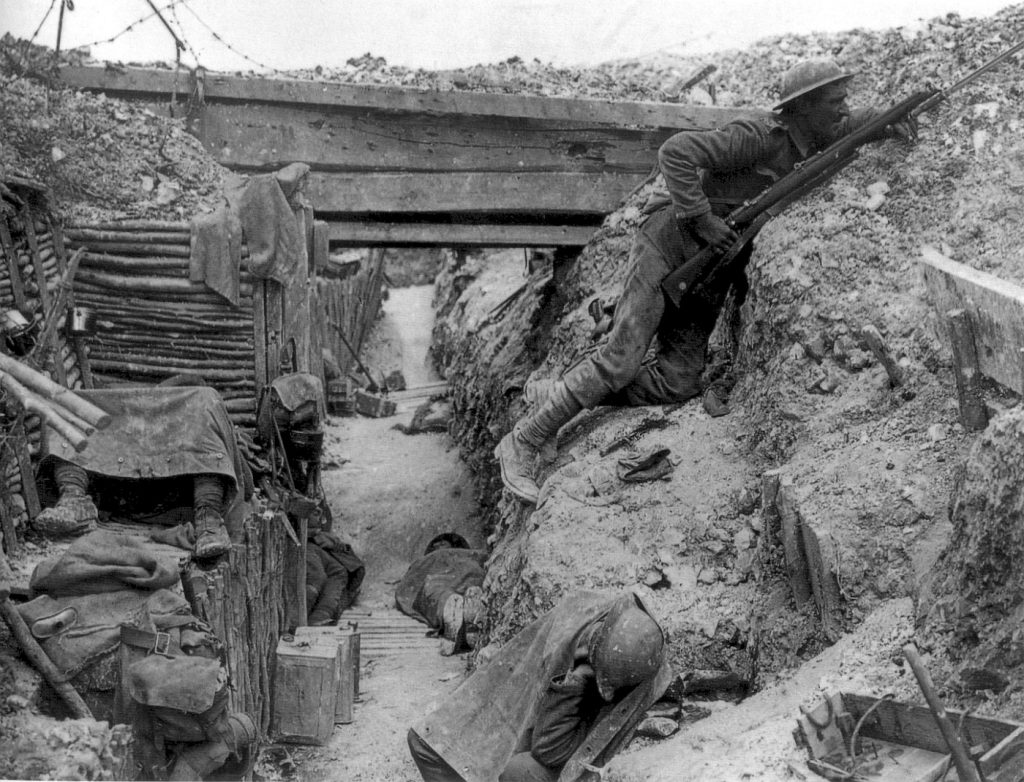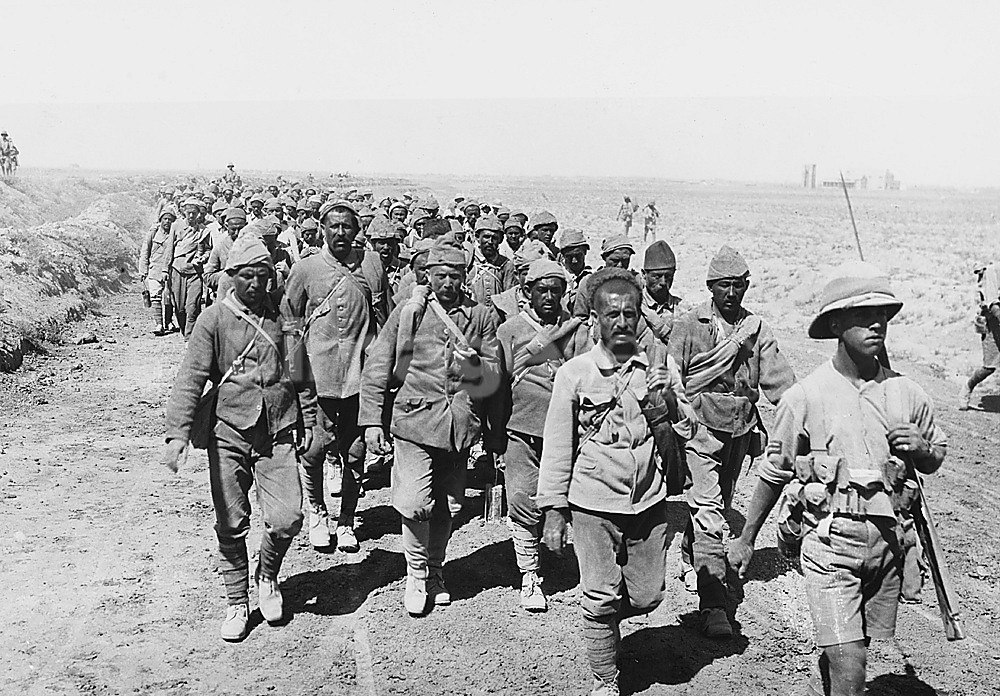First Battle of the Marne
Two of the major battles in the First World War were the First and Second Battle of the Marne. Let’s take a look at the First Battle of the Marne, which was one of the first major battles of World War One.
It takes its name from the Marne River, near Paris, where the battle was fought between September 5th and September 12th in 1914.
1,400,000 German soldiers went to war with 1,000,000 British and French soldiers.
The Germans, led by General Helmuth von Moltke, outnumbered the British and French, whose six French armies and one British army were led by General Joseph Joffre and General John French.
General French, contrary to what his name might lead you to believe, led the British and not the French army!
During these early days of World War One, the Germans had been gaining lots of ground and winning lots of battles by launching surprise, speedy, attacks.
This was all part of their war strategy, called the Schlieffen Plan. The Germans knew that if they waited for an attack from the Russians in the east, they would have to fight on the eastern and western borders at the same time.
Instead, the German army decided to advance quickly on the west.
They launched without delay and had advanced through Belgium and France when allied troops went to try to stop them in their tracks around Paris.
This was an all-out attack – a full effort to stop the German army – and this became known as the First Battle of the Marne.
The British leader, Sir John French was not keen on attacking because he was worried about his soldiers’ weariness.
However, General Joseph Joffre, leader of the French armies, convinced the British to launch.
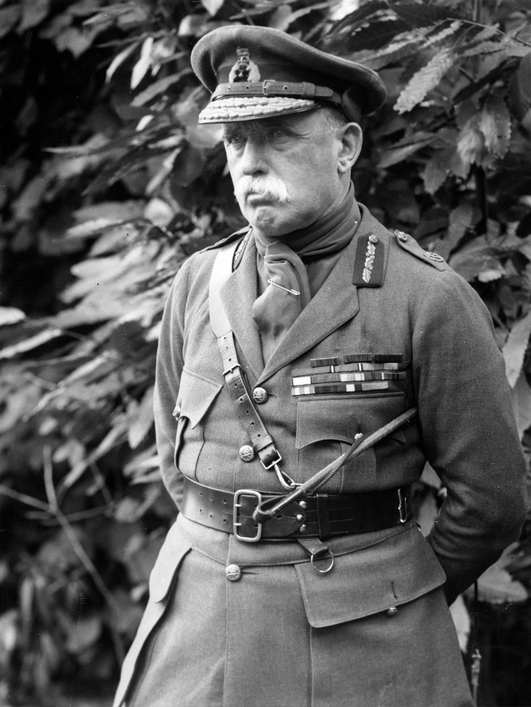
The Battle of the Marne Begins
Germany advanced with two armies. As these armies became detached and spread out, the British and the French took advantage and charged between them.
This split up the German troops. In a confusing and chaotic approach, the Allies then attacked the armies from all sides.
The Germans retreated after a few days fighting, and this changed the course of the war.
The Germans went back to the Aisne River in northern France and dug long lines in the ground, called trenches, where they held their ground and kept the Allies at bay for the next three years.
The First Battle of the Marne was very significant (important) in World War One because it was seen as a huge victory for the Allies. Germany’s Schlieffen Plan (fighting on one Front at a time) had failed.
Germany was now forced to fight on two fronts – the east and west – at the same time.
Casualties on both sides
The word ‘victory’ (a win) seems a strange word to use when the armies on both sides at the First Battle of the Marne suffered huge casualties.
Around 220,000 Germans were injured or killed along with 263,000 men on the Allies’ side. When we talk about war, we should all remember that many of our ancestors lost their lives in battle, no matter which side they were on at the time.
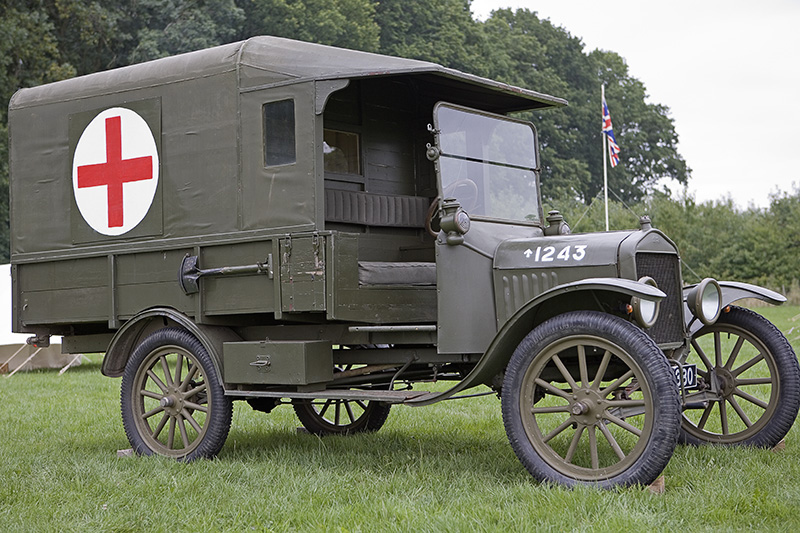
Quiz – Time to Test Your Knowledge
What was the Schlieffen plan?
Why was the Schlieffen plan created by Germany?
Where was the First Battle of the Marne fought?
Who was John French?
What happened after the Germans retreated?

